constituent assembly of india debates (proceedings)- volume vii
constituent assembly of india debates (proceedings)- volume vii
constituent assembly of india debates (proceedings)- volume vii
Create successful ePaper yourself
Turn your PDF publications into a flip-book with our unique Google optimized e-Paper software.
that caused by the existence <strong>of</strong> different tribes who have little feeling <strong>of</strong> solidarity among themselves.<br />
Quite recently a sort <strong>of</strong> tribal council to bring, together the different tribes with a view to educating them<br />
in local self-government was undertaken by the Sub-Divisional Officer, but the Mikir, influenced as they<br />
were by people from the Mikir Hills who wanted an amalgamation <strong>of</strong> the Mikir area with the Mikir Hills<br />
portion, would not co-operate in the joint council. Then there is the question <strong>of</strong> choosing a common<br />
representative. The Cachari being the most numerous have some advantage and the area is obviously<br />
too small for the representation <strong>of</strong> more than one in the provincial legislature. It is likely however that<br />
there will be a sufficient combination for the purpose <strong>of</strong> electing a common representative. Since this<br />
area cannot share a representative with plains areas, the population <strong>of</strong> 37,000 will have to be provided<br />
with a representative <strong>of</strong> their own. If however a local self-governing body is formed in this district it is<br />
clear that there will have to be some kind <strong>of</strong> regional arrangement by which the different tribe shave<br />
their own separate councils which will then come together in the form <strong>of</strong> a council for the whole subdivision.<br />
Like most other hill districts this area is also a deficit area. The same feeling which exists in other<br />
areas about safeguarding land and protection <strong>of</strong> the land from occupation by outsiders as well as<br />
excluding them also from other activities which may lead to exploitation prevails here. One feature <strong>of</strong><br />
this area is that among the different tribes it is Hindustani which is more <strong>of</strong> common language than<br />
Assamese.<br />
7. KHASI AND JAINTIA HILLS -<br />
This partially excluded area consists <strong>of</strong> the Jaintia Hills formerly forming part <strong>of</strong> the Kingdom <strong>of</strong> the<br />
old Jaintia Kings and now forming the Jowai Sub-division, and some 176 villages in the Sadar Subdivision.<br />
The Khasi and Jaintia Hills as a whole consists <strong>of</strong> a large territory between the Garo Hills on the<br />
west and the North Cachar Hills and the Mikir Hills on the east. The Khasi States which consist <strong>of</strong> 1,509<br />
villages cover the western portion <strong>of</strong> the Hills and the British villages are interlaced with them. The<br />
people <strong>of</strong> the Jowai Sub-division are known as Synteng or Pnar and speak a dialect but with the<br />
exception <strong>of</strong> a small number <strong>of</strong> Mikir on the northern slopes <strong>of</strong> the Hills, the whole population <strong>of</strong> these<br />
Hills may be regarded as uniform. Unlike their neighbours who speak Tibeto-Burman tongues the Khasi<br />
form an island <strong>of</strong> the MonKhmer linguistic family.<br />
The Khasi States, which are about 25 in number, are some <strong>of</strong> the smallest in India. The largest States<br />
are Khyriem, Mylliem and Nongkhlao and the smallest is Nonglewai. The system <strong>of</strong> inheritance <strong>of</strong> Chief<br />
ship is described as follows: -<br />
"The Chiefs <strong>of</strong> these little States are generally taken from the same family inheritance going through<br />
the female. A uterine brother usually has the first claim and failing him a sister's son. The appointment is<br />
however subject to the approval <strong>of</strong> a small electoral body, and the heir-apparent is occasionally passed<br />
over, if for any reason, mental, physical or moral, he is unfit for the position. The electors are generally<br />
the myntries or lyngdohs, the representatives <strong>of</strong> the clans which go to form the State." In Langrin, the<br />
appointment is by popular election. In some <strong>of</strong> the States, if the Myntries are not unanimous in their<br />
choice, a popular election is held. The Chiefs are known as siem in most States; but in some they are<br />
called Sardar, Lyngdoh in three <strong>of</strong> them and Wahadadar in one. The functions <strong>of</strong> the chiefs are largely<br />
magisterial and in the discharge <strong>of</strong> their duties they are assisted by their My tries. The relations between<br />
them and the Government <strong>of</strong> India are based upon sanads issued to them. For specimen <strong>of</strong> these sanads<br />
Volume XII <strong>of</strong> Aitchison's Treaties Engagements and Sanads may be referred to. Under the terms <strong>of</strong> the<br />
sanad, the chiefs are placed completely under the control <strong>of</strong> the Deputy Commissioner and the<br />
Government <strong>of</strong> India and waste lands as well as minerals are ceded to the Government on condition that<br />
half the revenue is made over to the Siems. Their criminal and civil authority are also limited. The sanads<br />
do not mention the right to levy excise on liquor and drugs and presumably the Siems have that right.<br />
Though the States are not in the partially excluded areas, the main interest attaching to them is the fact


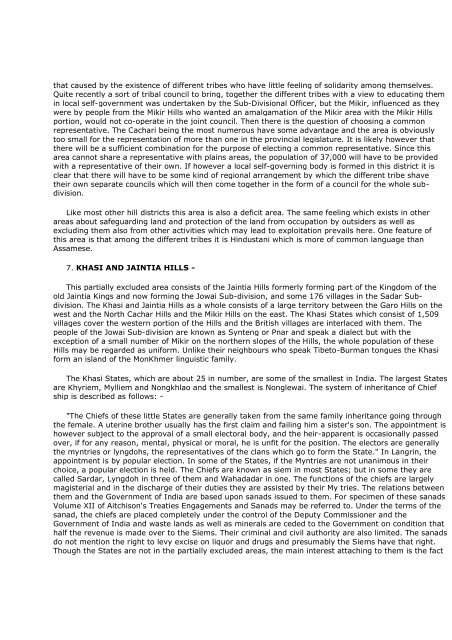
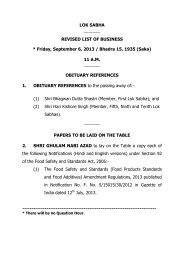
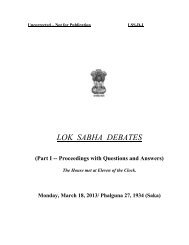

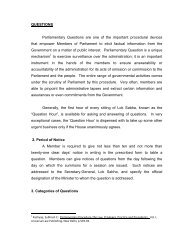
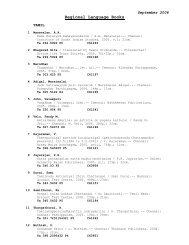

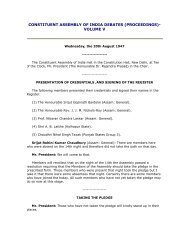
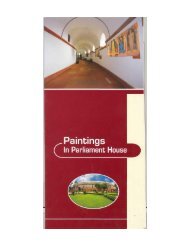
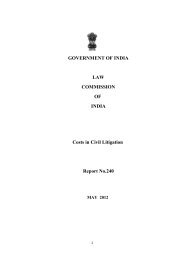
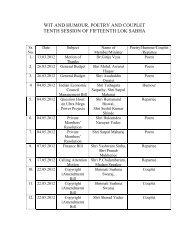
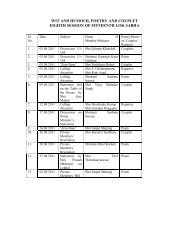

![gÉÉŌ A.]ÉŌ. xÉÉxÉÉ](https://img.yumpu.com/8015720/1/190x245/geeo-aeo-xeexee.jpg?quality=85)
